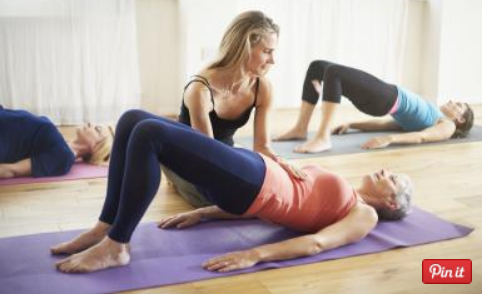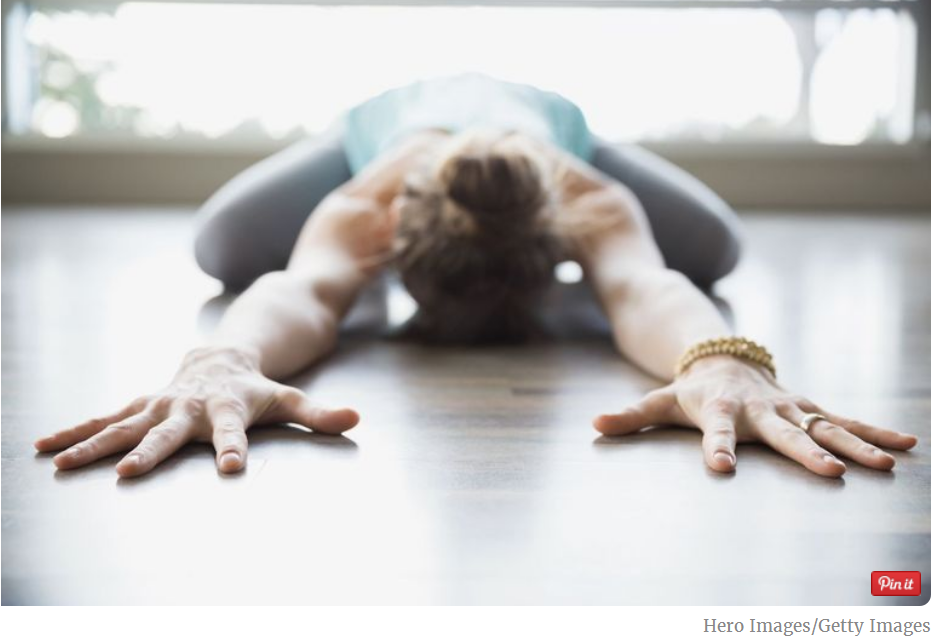
Yoga and the Problem Back:
If you have a back problem, it’s best to get an okay from your doctor before trying yoga. Back pain is often the result of a biomechanical imbalance in spinal structures. Your doctor can advise you of:
- Any movements to avoid
- The most productive level of challenge
- Safety modifications
- Effects of interaction between exercise and your medications
What a Good Yoga Teacher Can Do:
Once you have had this conversation with your doctor, tell your yoga teacher about it. A good teacher will be able to respond to your medical limitations with the use of props (special aids) and modifications, allowing your experience with yoga to be safe and beneficial.
Unless you are a professional rehabilitation specialist, it is imperative to find a qualified yoga teacher.
Balance Is Key:
Doing yoga cultivates a balance between the flexibility and strength of the muscles of the body, often the real culprit in back pain. Most people are tight in key areas affecting the spine – in the hips and shoulders, for example. A system like yoga, which releases muscle tension, can improve back pain. While the emphasis is on stretching and flexibility, yoga also develops muscle strength.
Types of Yoga Suitable for Back Pain Sufferers:
There are a variety of yoga styles out there, ranging from gentle to vigorous. Also, some styles emphasize spirituality and emotions, while others, most notably hatha yoga, focus more on physical postures. For persons with back pain, a hatha yoga style is a good place to start, particularly classes that emphasize rest and restoration.
Styles such as kundalini, ashtanga and bikram are specialized and challenging – not a good choice for back pain sufferers. A good rule of thumb: Gentle is better.
Alignment and Body Awareness – The Hallmarks of Hatha Yoga:
As a whole-body system, yoga develops body awareness and places emphasis on alignment.
This means that the proper location of each body part (feet, knees, hips, spine, shoulder, head) affects all the others. Like Pilates, yoga emphasizes core work, although yoga has less abdominal strength development.
Don’t Try – Modify! An Introduction to Props:
You may be wondering, “Will I be able to do yoga without creating more pain?” Most yoga classes utilize props. Props help bring the pose to you, when tight or weak muscles cannot fully bring you into the pose.
Relax, Deeply:
Yoga incorporates breathing techniques that can lead to stress relief and help you get through the challenge of the stretch. Often, yoga classes have a spiritual basis, offering techniques and the environment in which to work on deeper levels of healing and pain resolution.
Talk to the Prospective Yoga Teacher:
Talking to your prospective yoga teacher can help you determine which class is right for you. Probe to find out how skilled the teacher is with back and neck pain, and learn how challenging the class is.
Some yoga teachers are big on manual adjustments, including stretching. In most cases, adjustments are helpful, but you may need to forgo them to avoid aggravating your pain. Discuss this with the yoga teacher before the class starts, to avoid an unwanted surprise.
Read the full post in about health









